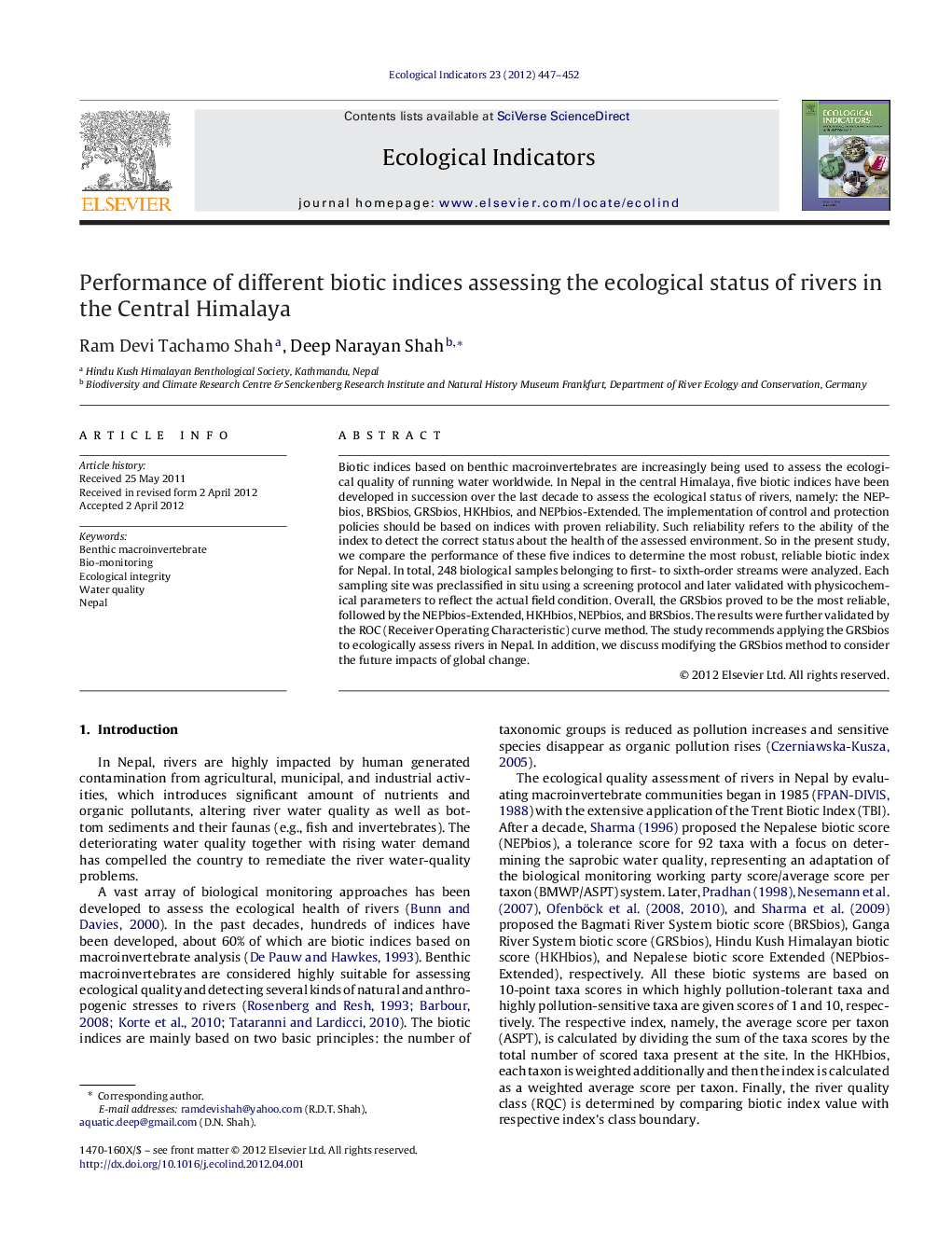| Article ID | Journal | Published Year | Pages | File Type |
|---|---|---|---|---|
| 6295613 | Ecological Indicators | 2012 | 6 Pages |
Abstract
Biotic indices based on benthic macroinvertebrates are increasingly being used to assess the ecological quality of running water worldwide. In Nepal in the central Himalaya, five biotic indices have been developed in succession over the last decade to assess the ecological status of rivers, namely: the NEPbios, BRSbios, GRSbios, HKHbios, and NEPbios-Extended. The implementation of control and protection policies should be based on indices with proven reliability. Such reliability refers to the ability of the index to detect the correct status about the health of the assessed environment. So in the present study, we compare the performance of these five indices to determine the most robust, reliable biotic index for Nepal. In total, 248 biological samples belonging to first- to sixth-order streams were analyzed. Each sampling site was preclassified in situ using a screening protocol and later validated with physicochemical parameters to reflect the actual field condition. Overall, the GRSbios proved to be the most reliable, followed by the NEPbios-Extended, HKHbios, NEPbios, and BRSbios. The results were further validated by the ROC (Receiver Operating Characteristic) curve method. The study recommends applying the GRSbios to ecologically assess rivers in Nepal. In addition, we discuss modifying the GRSbios method to consider the future impacts of global change.
Related Topics
Life Sciences
Agricultural and Biological Sciences
Ecology, Evolution, Behavior and Systematics
Authors
Ram Devi Tachamo Shah, Deep Narayan Shah,
